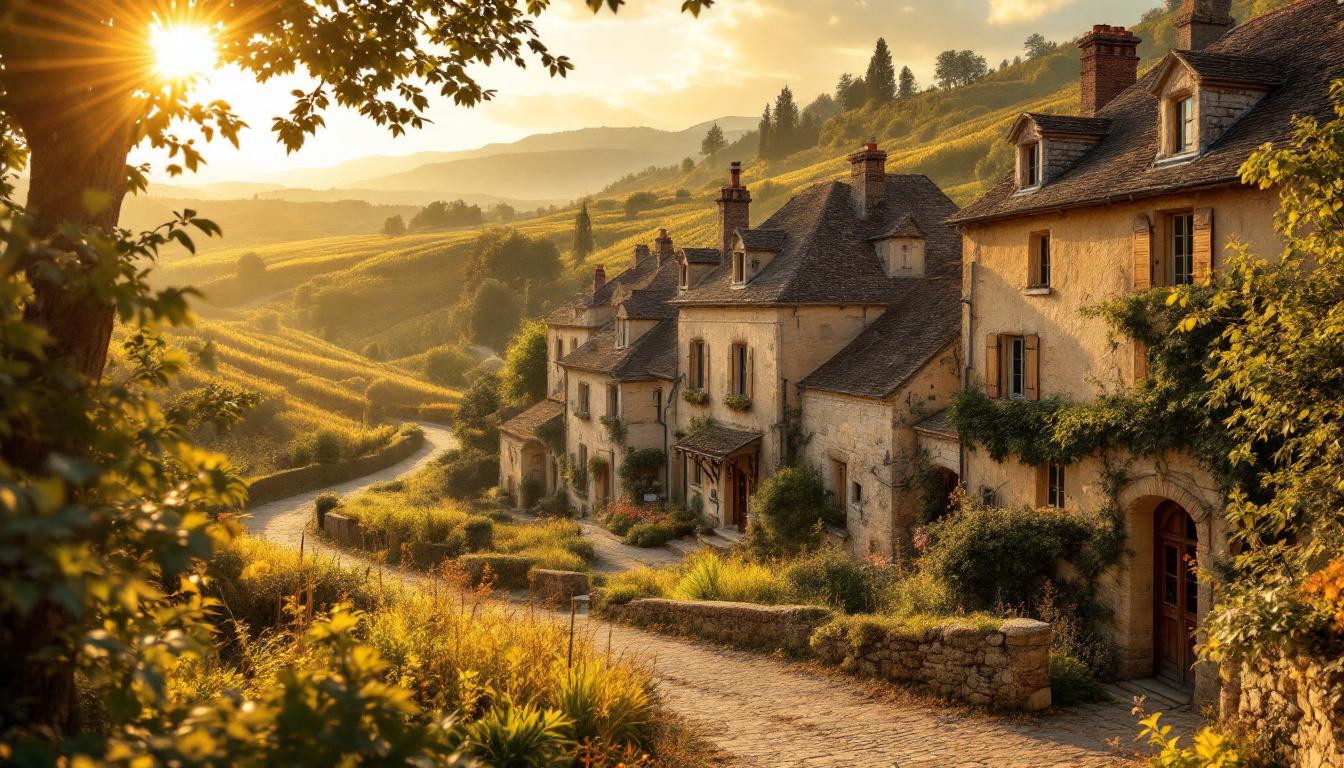The paintbrushes of Pierre-Auguste Renoir once captured the golden light filtering through the trees in Essoyes, a secluded village that remains one of France’s most captivating artistic pilgrimages. This intimate hamlet in the Champagne region became the summer retreat of the celebrated Impressionist painter in the late 19th century, when he married Aline Charigot, a local woman whose hometown would become his creative sanctuary.
Where impressionism meets rural French charm
Walking Essoyes’ narrow streets feels like stepping directly into a Renoir canvas. The village embraces visitors with honey-colored buildings, their weathered facades telling stories of centuries past. Unlike other historic French villages overrun with tourists, Essoyes maintains an authentic rhythm of rural life that has changed little since Renoir’s time.
The Renoir Cultural Center: stepping into the artist’s world
The heart of any visit is the meticulously restored Renoir family home and studio. Walking through rooms where the master painter once lived reveals intimate glimpses of his daily existence. The studio, with its north-facing windows capturing that signature diffused light, stands exactly as it did when Renoir created some of his most celebrated works here.
“In Essoyes, one breathes art in the very air. The light here is unlike anywhere else in France—it’s what drew Renoir and continues to enchant painters today,” explains Marie Dumont, director of the Renoir Cultural Center.
A landscape that inspired genius
The undulating countryside surrounding Essoyes provided endless inspiration for Renoir’s canvases. The same golden wheat fields, meandering Ource River, and vine-covered hillsides that captivated his artistic eye remain remarkably preserved. Visitors can follow the “Renoir Path,” a scenic walking route that passes locations featured in his paintings, including spots where he set up his easel to capture the rolling landscape.
Champagne culture in an artistic setting
Essoyes sits within the southern reaches of the Champagne region, where family-run producers create exceptional sparkling wines. Unlike the commercial operations in Reims or Epernay, the small champagne houses here offer intimate tastings where you’ll likely meet the winemaker personally. Champagne Mercuzot, located in the village itself, continues generations-old traditions just steps from where Renoir painted.
Beyond Renoir: exploring the surrounding treasures
Essoyes makes an ideal base for exploring nearby medieval villages and hidden abbeys. The historic city of Troyes lies just 30 minutes west, while the Memorial Charles de Gaulle in Colombey-les-deux-Églises offers insight into another famous French figure. Those seeking family entertainment can visit nearby Nigloland, a charming amusement park set amid the Champagne countryside.
“What makes Essoyes special is that it hasn’t succumbed to commercialization like other historic villages. It remains a living community where you can experience authentic rural French life,” notes local historian Jean Perrier.
When to visit: capturing Essoyes at its finest
May through October offers the most rewarding experience, with summer bringing festivals celebrating Renoir and the Belle Époque era. The “Renoir in Essoyes” cultural center opens daily during this period, allowing full immersion in the painter’s world. Winter visits reveal a different charm, as the architecture stands in stark relief against occasional snow, reminiscent of scenes from Europe’s best-preserved historic towns.
Where art history lives and breathes
Unlike larger museums where Renoir’s works hang in sterile galleries, Essoyes offers something profoundly different—the chance to experience the very environment that shaped his artistic vision. Here, among the same trees, beneath the same quality of light, visitors gain deeper insight into the master’s paintings than any museum placard could provide.
In Essoyes, the boundary between art and life dissolves. The village doesn’t simply commemorate Renoir—it continues to embody the timeless rural French beauty that captivated him. Like other sacred retreats worldwide, this humble village preserves something increasingly rare: a place where artistic inspiration and everyday life remain gloriously, authentically intertwined.
